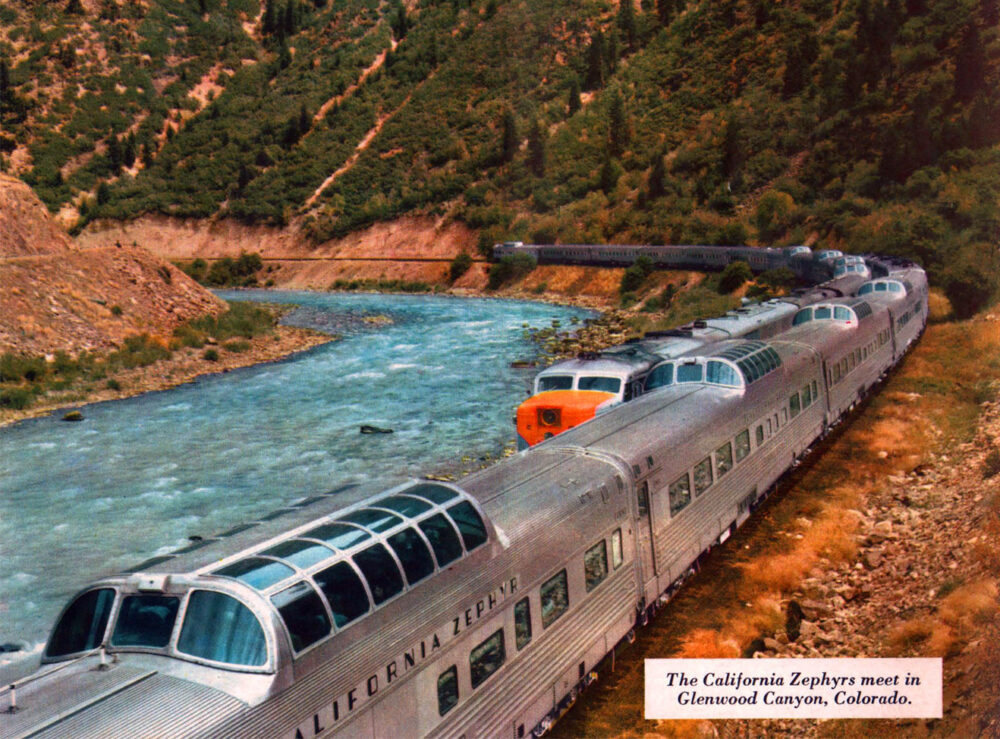“The Most Talked About Train in the Country”

by Juan Sanchez, Guest Contributor
This photo shows very nicely why this train was the “Most Talked About Train in the Country”. Two modern domeliners meeting in some of the most scenic stretches of track in the country. The route of the California Zephyr had always been a sort of afterthought when it came to Chicago-Bay Area rail travel. Fast and luxurious trains like the City of San Francisco and the Overland Limited carried the bulk of this market along the historic Overland Route, our first Transcontinental Railroad. The clunky, dated, and slow Exposition Flyer, run by the Burlington Route, the Rio Grande, and the Western Pacific, was simply no match.
A new invention gave the three CZ roads a fighting chance. The dome car, combined with other specialty cars from the Budd Company, were chosen to make the new CZ. In particular, the abundance of dome cars made it stand out. Five of them were used in each trainset, three coaches, one buffet-lounge, and one sleeper-observation, and rightly so, as the
CZ’s route was one of constant beauty, featuring endless mountains, canyons, rivers, and forests, compared with the ample yet bleak plains of the Overland Route. The CZ was marketed as the pinnacle, not in swift transportation, but in land cruises. It was marketed as a vacation experience in-and-of-itself. Adding to the “land cruise” glamor were the Zephyrettes, young nurses to look after the passengers, and ample dining selections, featuring three separate dinners (an economy early-bird, a regular sitting, and a late-night, five-course Italian dinner).
This “Land Cruise” varnish served it well. It maintained year-round occupancy rates of up to 70% year round, but the financial pinch was inevitable. The Western Pacific was the first railroad to start losing money on the Zephyr, and petitioned to discontinue it. This would spark one of the longest discontinuance processes in history, and perhaps the one with most public outcry. After two failed attempts, the Western Pacific, aided by a joint Rio Grande application and the indifference of the Burlington, finally got the Interstate Commerce Commission’s blessing to discontinue the CZ. On March 2nd, 1970, the final California Zephyrs left their home terminals, arriving at their destinations on March 22nd. Many have argued that the death of the original CZ was the cause for the creation of Amtrak (The author strongly disagrees with this claim), regardless, in many ways, the California Zephyr was the first of “Today’s Long Distance Trains”. A modern mix of land cruise, intercity transport, and vital connection. The California Zephyr would come back to life thirteen years later, and in the middle, other trains connected the Bay Area and Chicago, but those are stories for another time. The story of the “original” CZ ends here.



